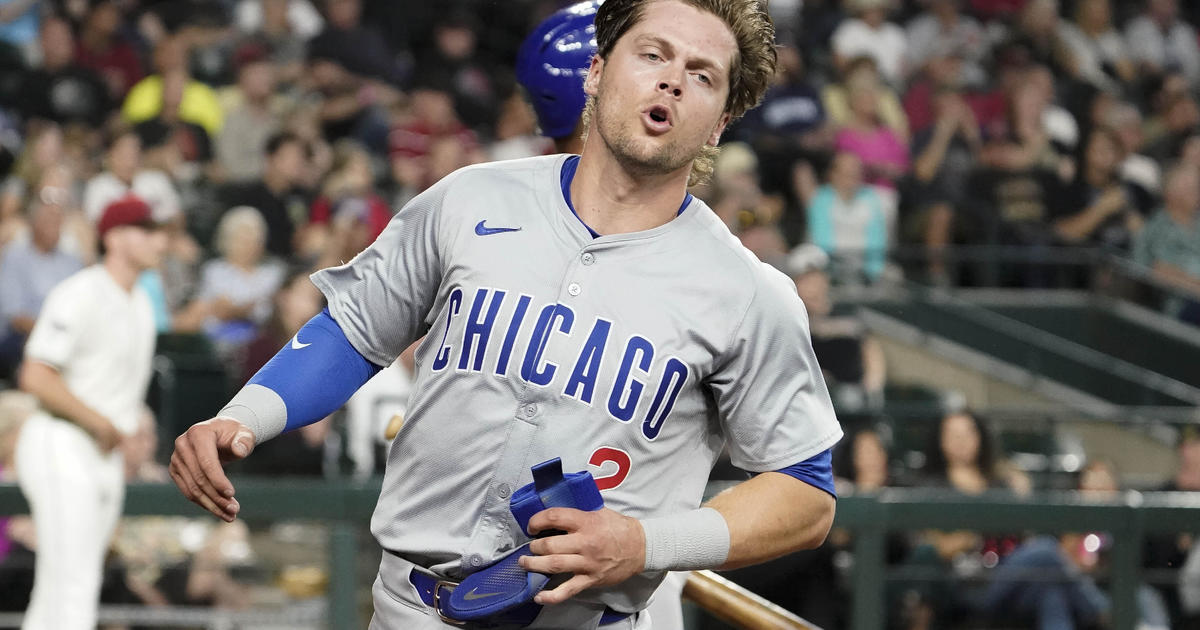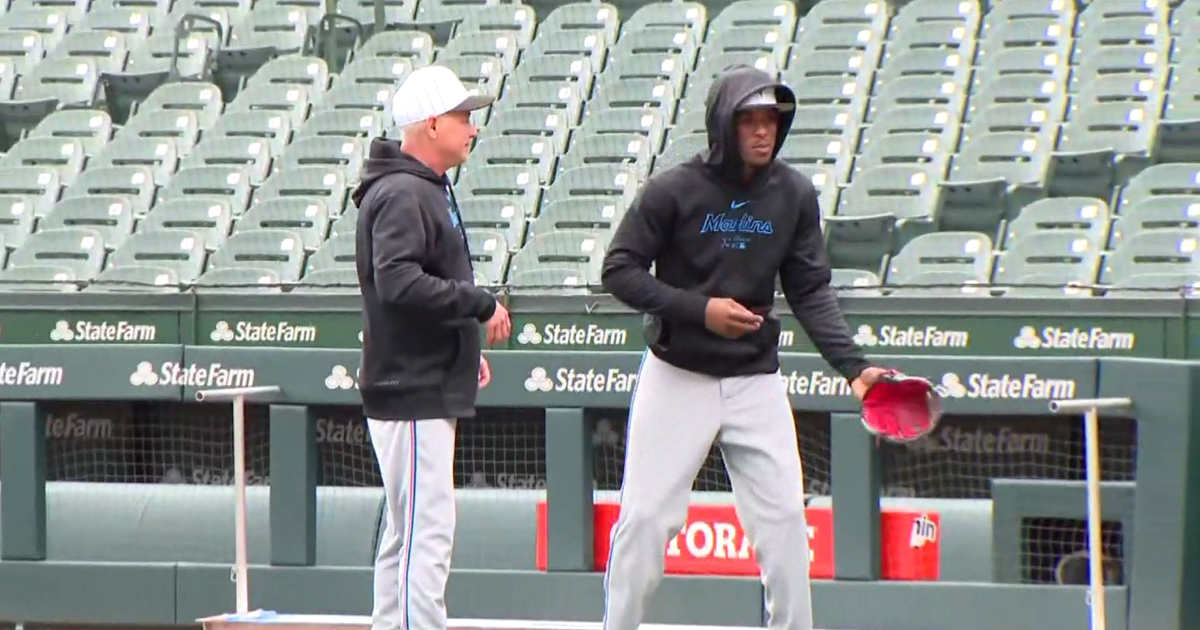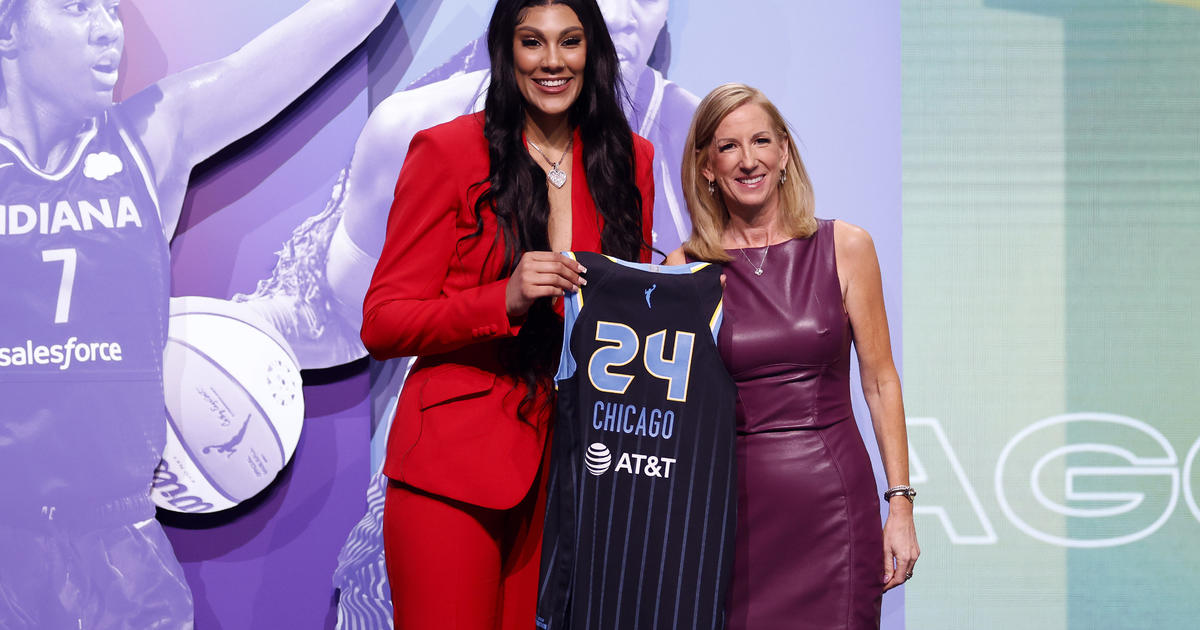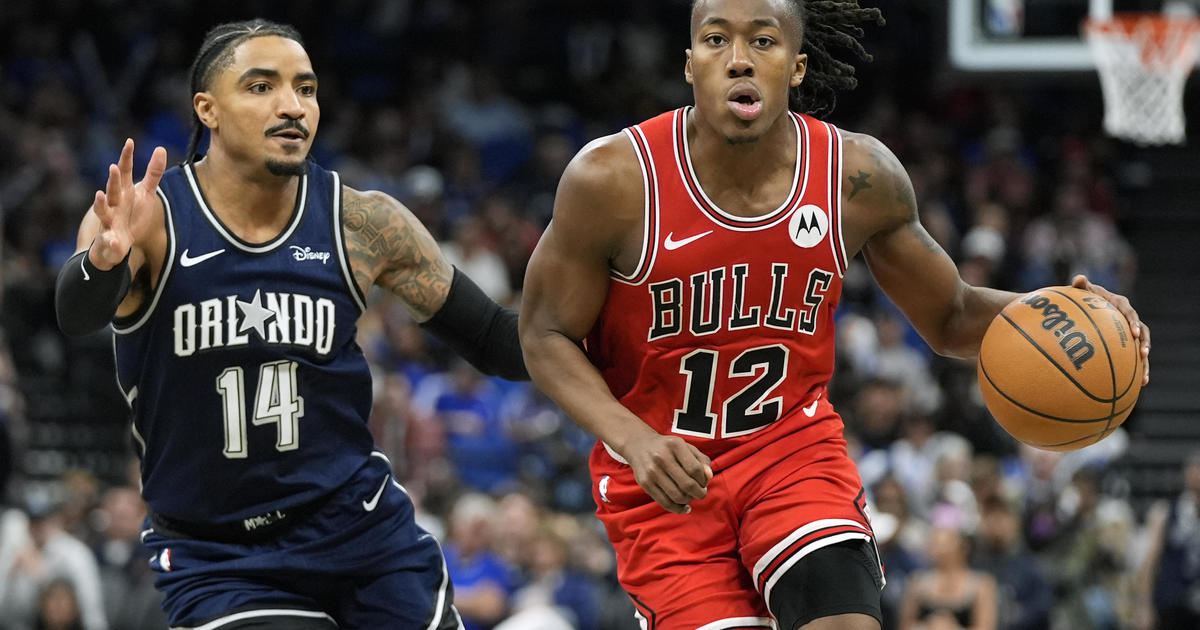Shepkowski: The Case For Moving Russell Up, Fowler Down In Cubs' Order
By Nick Shepkowski--
(CBS) When you win 97 games, reach the NLCS, have the reigning National League Cy Young and Rookie of the Year winners and your roster features four players who finished in the top 15 for MVP voting a year ago, it's hard to find too many issues with a baseball team. That's especially true when all that happened a year or so earlier than most baseball observers anticipated and when the offseason brought upgrades in Jason Heyward, Ben Zobrist and John Lackey.
But I did find one gripe with the 2015 Cubs that made me scratch my head a bit, and I believe it should be tweaked in 2016.
Shortstop Addison Russell had a great glove coming up through the minor leagues, but it was his bat that made him that much more special as a middle infielder. His quick start to this spring in the power department made me research some of his numbers at the plate.
The findings: 1.027, .865 and .858.
Those were Russell's OPS numbers during his 2012, 2013 and 2014 seasons in the minor leagues, when he was 18, 19 and 20 years old, respectively.
For comparison's sake, teammate Anthony Rizzo's OPS numbers as those ages may surprise you, as he went .848, .828 and .814. That's not a knock on Rizzo by any means but more to the hype that is Russell's potential power bat.
Russell's 2015 debut slash line of .242/.307/.389 is far from awful for a 21-year-old, but it wasn't great by any means, either. A drop from a .858 OPS in mostly Double-A in 2014 to .696 as a 2015 big leaguer was a substantial one.
Now why did it happen?
It's easy to say, "He's 21 and playing on the big stage for the first time, a big drop is to be expected."
Sure, that's understandable, but that drop was still larger than what would normally be anticipated, especially considering how special Russell's power numbers were throughout his minor league development.
So what else could have caused Russell's big dip?
Perhaps Russell batting ninth and the starting pitcher hitting eighth wasn't a good idea for the Cubs after all -- or at least not as extensively as he did in 2015. The importance of seeing a pitcher multiple times in the same game has been discussed for years and years, and batting ninth almost all of last season probably cost Russell considerably.
The way the Cubs roster shakes out, it's safe to say that on most days that Heyward, Zobrist, Rizzo, Kris Bryant, Kyle Schwarber (or Jorge Soler), Miguel Montero, Fowler and whoever the starting pitcher is will be the regulars ahead of Russell in the order, if he were to remain in the nine-hole.
What's worth researching is how hitters fare as they face a starting pitcher again and again in a game.
In 2015 while with the Cardinals, Heyward had a third plate appearance against a foe's starter 101 times, with an .876 OPS to show in those situations. That was 79 points higher than his season OPS of .797.
In time split between the Athletics and Royals, Zobrist saw a starting pitcher a third time 109 times and had an .885 OPS to show for those times he stepped into the batter's box. That was 76 points better than his season OPS of .809.
Those third times seeing a starting pitcher were extremely fruitful in 2015 for Heyward and Zobrist, who will be Cubs regulars in 2016. It suggests they should be near the top of the order.
Here's the rest of the numbers for notable Cubs:
Rizzo: .899 OPS for the year, 1.002 in third plate appearance against starters (177 such plate appearances)
Schwarber: .842/.891. (47)
Montero: .754/.935. (62)
Soler: .723/.727. (72)
Bryant: .858/.851 (121)
Fowler: .757/.651 (136)
Rizzo, Schwarber and Montero saw notable increases in production in their third plate appearances against starting pitchers. Bryant and Soler stayed static. It was Fowler whose production decreased.
To me, Fowler's number is a bit of a concern because of his anticipated lead-off position in the order. Chances are that as long as a starting pitcher makes it through roughly four innings, Fowler will coming up to a bat that third time against him -- in a spot he's had issues in previously.
A little deeper look at Fowler reveals he had a .231 average, .326 on-base percentage and just a .325 slugging percentage in those third plate appearances against starting pitchers. In a season that was actually a down year for Fowler, those numbers really stood out.
Fowler has a career slash line of .267/.363/.418 that results in a .781 career OPS (some will point out those numbers are aided by playing five seasons for the Rockies in Coors Field). His slash line in 2015 was just .250/.346/.411 for a .757 OPS.
Put it all together and Fowler's third time against a starting pitching in 2015 resulted in a 36-point drop in batting average from his career average, a 37-point drop in his on-base percentage and a 93-point drop in slugging percentage. It appears much more alarming in those terms.
Now back to Russell and that nine-spot, which manager Joe Maddon liked placing him in to protect him and not let him be pitched around, knowing the top of the order followed.
Russell saw a starting pitcher a third time just 37 times in 2015. His numbers were pretty brutal in those 37 plate appearances, hitting just .147 with a .216 on-base percentage. But those 37 such plate appearances were just about the least number for any regular in baseball last year, as he ranked 291st in that regard.
Chances are when Russell did actually see someone a third time, that pitcher was throwing well that day, as the pitcher would be on the verge of facing the top of the order for the fourth time against a team that was known to work the count.
Lineups can be overrated as to how they actually set up and how many extra runs they lead to over the course of 162 games. I won't argue that the pitcher shouldn't hit eighth -- at the end of the day, I don't feel that one-spot change makes a world of difference either way.
What I would like to see in 2016 is Russell bat somewhere other than ninth, a spot he filled in 116 of his 142 games a season ago. Bumping Russell up even a couple of spots to sixth or seventh would allow him to see a starting pitcher a third time, one who's more likely to be struggling a bit.
With capable on-base players at the top of the order potentially in Heyward and Zobrist, the need for Fowler to be there isn't nearly what it was a season ago.
This is dependent on Russell improving from his age-21 to age-22 season, but the more I look at the numbers, the more sense it makes for Fowler to have significantly more at-bats toward the bottom of the order than the leadoff spot, which he resided in 146 times in 2015.
Nick Shepkowski is a weekend host at 670 The Score and produces The Spiegel and Goff Show each weekday from 9 a.m.-1 p.m. You can find all of his work here and follow him on Twitter @Shep670.



